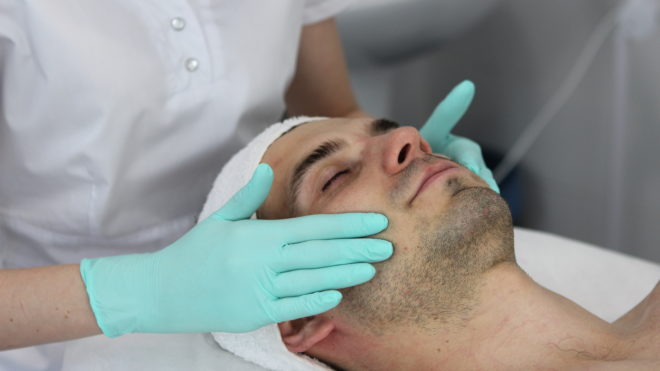Myths and realities of Glycolic Acid
By Danne Montague-King Copyright March 2018
This is a boring ingredient for me to cover inasmuch as I have dealt with it for decades since the days of “Acid Reign” in the 1980’s when glycolic acid was being put into everything and touted as the grand epitome of all skin care ingredients. Endowed with moisturizing skin, peeling away the years like an onion, lifting breasts, removing acne and hyperpigmentation and creating massive, new collagen in all human tissue (hence the breast lift) it was thought to be the safest and most effective tool in the world.
Billions were made by glycolic purveyors all over the world, while thousands of skins, particularly in Asia, were damaged and quite a few strange acneic cysts began popping up globally from over-avid users.
Personally I always found it an annoying little molecule that when used incorrectly in formulation, to settle as “hot spots” in the concavities of the face-which is probably why therapists during that era would put it on for 10 minutes and rinse it off quickly.
WHAT IT IS: For those who are unclear what glycolic acid is, outside of being touted as a safe, natural fruit sugar acid keratolytic, the actual commercial preparation is far more than that—although sugar cane and other fruit by-products are usually included.
So is formakdehyde and carbon monoxide.
This does not mean however, that these toxic things end up in the final product that goes on your face—I am merely pointing out that glycolic, which is used in other industries such as fabric dyeing, goes through a process much removed from squeezing an orange—as marketing suggests (always a photo of an orange in so many ads).
The end product is known as hydroxy acetic acid.
If I were making my own, I would prefer using an enzymatic biochemical process of sugar beets or unripe grapes, a process that would require less energy in production but very time consuming to render.
HOW DOES IT WORK:
The Alpha Hydroxy Family are all hygroscopic in nature—they work by not only temporarily lowering the PH of the skin—loosening a lot of the “glue” that holds dead cells to our epidermis, but swelling the dried out excessive croneum up like tiny balloons that eventually overload, burst and detach from the newer, baby cells underneath.
Professionally done, this is a highly successful treatment that removes old defense mechanisms from the skin ( everything we don’t like when we look in the mirror are just skin defense mechanisms stubbornly hanging around). But I prefer to use reliable Lactic acid with its larger molecule and very little glycolic—much more control for the therapist or physician.
Based upon their hygroscopic nature of pulling available moisture to the epidermis in the early years, AHA”s were misconstrued as “moisturizers” The exact opposite was, in fact, the real story. Men and women globally discovered that daily use of these”natural products” dehydrated the hell out of their skins, over thinned the epidermis so they were sitting ducks for hyperpigmentation (especially deeper toned people) and promoted strange, cyst-like lumps under acid hardened skins in many cases.
So much so I had to formulate a strong enzyme treatment to remove excess glycolic from the tissue before any other effective treatment would be really effective.
My many articles on the subject in the 80”s-90’s earned me some saber rattling from companies whose entire product ranges depended upon glycolic acid, one Swedish doctor called me a “mad man” in print which made me know that at least part of the world were reading me!
It all died down when the marketing machine went looking for other trends to tout as “new breakthroughs.” but glycolic acid has persisted through at least two generations due to the fact that there has been more respect for this ingredient and the realization that it can be a very good professional-use-only tool.
It does, as I pointed out, work well with other ingredients that are keratolytic in nature-including retinoids (which have the special ability to remove AND rebuild tissue based upon fibroblast stimulation). I think of glycolic as adding a little extra punch to a faster result, but not letting its tiny molecular size lead the way.
One of the biggest mistakes was blending it with hydroquinone or other melanin inhibitors with a thought to helping these pigmentation ingredients penetrate deeper into the epidermis!
Acid of any kind below PH 3.7 will harden the corneum. Any pathologists knows this which is why they preserve animal or human specimens in an formaldehyde acidic solution. Where-as quick lime (alkaline) was used by old time gangsters to dissolve and get rid of bodies by rapid desquamation! To reach the boundary’s of a melasma or other hyperpigmentation, alkalizing the area with a product of a PH of at least 12 for a few moments , keeping it moist to avoid alkaline burn proves much more of a “door opener” than slamming it shut with an acid.

